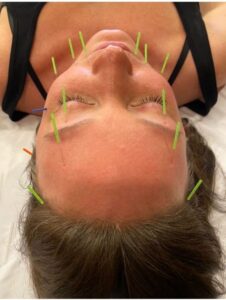
Bell’s Palsy is a form of temporary facial paralysis, affecting around 40,000 people in the US. The exact cause of Bell’s Palsy remains unknown, but recent research suggests that it may be triggered by the herpes virus or other infections. While conventional treatments like steroids and antiviral medications can help relieve symptoms, some patients may not benefit from them or experience adverse side effects. In this regard, alternative therapies like acupuncture have been gaining popularity among Bell’s Palsy patients. This blog will explore the effectiveness of acupuncture in treating Bell’s Palsy and provide insights into its underlying mechanism.
Acupuncture is a form of traditional Chinese medicine that involves inserting thin needles into specific points on the body, known as acupoints, to stimulate energy or qi flow. According to TCM, Bell’s Palsy may result from a disruption in the flow of qi in the affected region, leading to inflammation, edema, and nerve compression. Acupuncture can help restore the balance of qi and promote self-healing mechanisms in the body.
Several studies have investigated the efficacy of acupuncture for Bell’s Palsy, with mixed results. A systematic review and meta-analysis of 14 randomized controlled trials involving a total of 1093 Bell’s Palsy patients found that acupuncture significantly improved facial nerve function, compared to conventional therapy or placebo. Another randomized controlled trial involving 200 patients showed that electroacupuncture, which uses a mild electric current to stimulate the needles, was more effective than manual acupuncture alone in reducing facial muscle spasms and stiffness.
The mechanism underlying the therapeutic effect of acupuncture in Bell’s Palsy is not fully understood, but some theories suggest that it may involve the modulation of inflammatory markers, neural plasticity, and cortical reorganization. Acupuncture may also enhance blood circulation and oxygen supply to the affected area, reduce oxidative stress, and improve the immune response.
One of the advantages of acupuncture over conventional therapies is that it is generally safe and well-tolerated, with few adverse effects reported. However, it is important to choose a licensed and experienced practitioner who follows proper sterilization procedures and uses sterile needles to minimize the risk of infection or injury. Acupuncture may also be contraindicated in some cases, such as in patients with bleeding disorders, pacemakers, or compromised immune systems.
Another potential limitation of acupuncture is that it may not work for everyone or may take several sessions to see a noticeable improvement in symptoms. It is also often used as an adjunct therapy, meaning that it is combined with other treatments, such as massage, herbal medicine, or physical therapy, for optimal results.
Bell’s Palsy can be a distressing condition that affects daily activities and self-esteem. While conventional therapies can provide relief for some patients, others may seek alternative approaches that offer a natural, holistic, and individualized approach to healing. Acupuncture is one such therapy that has shown promise in improving facial nerve function, reducing muscle spasms, and promoting self-healing mechanisms. However, more research is needed to elucidate its underlying mechanism and effectiveness and to compare it with other therapies. If you are considering acupuncture for Bell’s Palsy, make sure to consult your healthcare provider and a licensed acupuncturist for personalized advice and treatment.


Follow Us